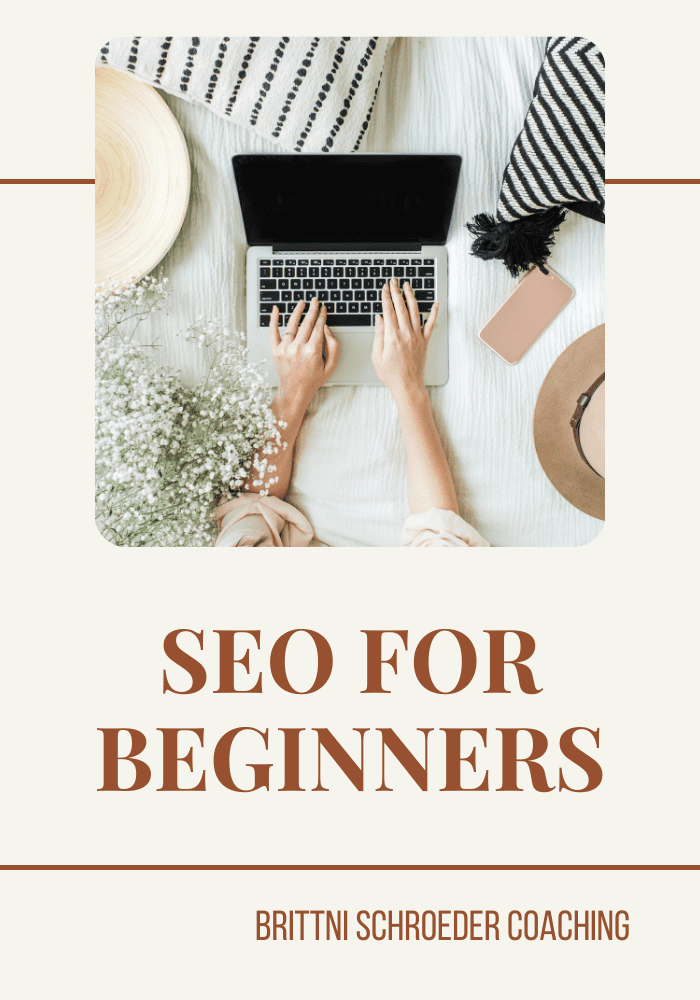brittni schroeder
BLOG
Brittni Schroeder Coaching
SEO FOR BEGINNERS

SEO is a great tool to generate free, passive traffic. Similar to other tools in our business, it takes time to see results, but if you are consistent and intentional you will notice an increase in traffic and visits to your website and/or blog. There are a few easy steps to learning SEO for beginners.
What is SEO?
Search Engine Optimization is a tool you should use to maximize the content you are producing to generate traffic. By creating relevant web content and using the proper elements, you will direct traffic to your site through search engines such as Google. Google is the biggest search engine and is used by millions each day.
Users typically type a subject line in the search bar and wait for Google to generate resources that match their request. People rarely look past the first page of results; therefore, our goal is to try to rank on Google’s first display page. The better you are at SEO, the more traffic and business you will start to receive. SEO for beginners will help your visibility as time progresses.
TITLES
Researching relevant keywords for your niche is essential to see the desired results. Identify the keywords that are searched most often in your area of expertise. Use the words in your content, but make sure you are using them authentically and not spamming each post. Your target client will quickly pick up on your overuse of keywords and may decide to disregard your work. Once you have identified the main keywords for your niche, you’ve finished the hardest part!
INTERNAL LINKS
Internal links are highly recommended to help your SEO. This means you link your blog posts and pages to each other, but only if they are relevant. For example, if I decide to write a post on confidence in business, I may choose to reference the blog post “The Difference between Confidence and Self-Confidence” in that post. To do this I find a word or sentence that refers to confidence and link it to that blog post. Employ this strategy in all your posts. This also helps your bounce rates as people will stick around on your website and find out more about you or your business.
IMAGES
Using images to help your SEO is another great tool. Google cannot tell what your images are about, so you need to tell Google by adding alternative text to your images.
You do this by editing your images on your page or post in the WordPress editor or similar program. After the image is selected, you will see a designated spot that reads Alternative Text or Alt Text; place your keywords there.
EXTERNAL LINKING
External linking refers to any web resource outside of your own website that can contribute to SEO. By linking an external resource in your blog or on your site is way to hopefully get backlinks. Back linking is when another site links back to you. Sites with higher page rank will give you more relevance in a Google search.
SEO doesn’t need to be overwhelming. Start with a few minor tweaks to your blog posts. Focus on one task at a time. Traffic generation is a process but will pay off if you are consistent. SEO is a great marketing tool that can be used without breaking the bank. Learning SEO for beginners can be simple and show you how to become intentional with your marketing and understand how to utilize a variety of traffic generation options.
